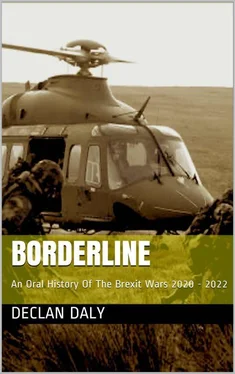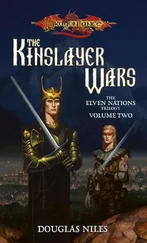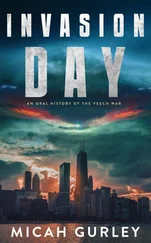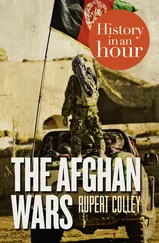By and large from the western side of peninsula and throughout the whole lot of the peninsula really, the IRA had not gathered and concentrated in numbers – they had learned that particularly well from this Sliabh Blooms. So, you were typically finding maybe maximum groups of five to ten. Their intention was to try and delay the movements of personnel through the area initially. Tracks, roads in, all the rest were layered with IEDS and covered with machinegun positions, that would obviously slow our efforts pushing in, increase casualties, cause problems with the whole thing that would give them time to come up with a plan.
How we got around that was that we began pushing in that way of course, with the ground troops 2 Cav, 28 battalion, all on the ground, but we were also leapfrogging and attacking each area, each group of IRA. And we weren't doing this you know in a straightline East West, or North to South. We were picking fights from the ISR picture, we would then send in 139s’ following either an airstrike or artillery strike. Send 139s full of troops and they would land on and engage. The command helicopters, the 135s like the one I was working in, they would stay back, up higher, the platoons would then cordon off a particular group, engage them and either destroy or capture them. A lot of times, what happened was that the ground troops would flush the IRA into maneuvering away, and they would then be picked off by a sniper in the command machine or by the door gunners in the 139s themselves. In fact, the initial Lessons Learned afterwards said that the helicopters accounted for somewhere in the region of 70 to 80% of all casualties caused to the enemy. That's through direct close-in combat, not through artillery or airstrikes.
The progress through the Cooleys was slow for the armoured units. They did suffer the delays that were intended to be suffered by them from the IRA perspective. They did take casualties, but the whole fact was, this is where the main body of troops was coming. For all the action and attention that the airmobile elements got, the numbers needed meant that ground pounding was the only way to move in a suitable force strength. As they cleared the way, more troops, even some of the new reservists, were feeding behind so that no area was left clear for the IRA to reoccupy. The intention was that once an area was passed by, it was then patrolled into and then kept clear. This whole operation was to be ‘The End’, remember, once an area was cleared it was to be occupied and that took numbers.
Overall it took eight days. It was intense. From an airmobile perspective, we were throwing guys into four to five firefights a day. They'd go through these fights, cordon, engage, destroy, search all the way to the end and extract. Whatever they could take in terms of prisoners or material, load it up and then go back and be ready to go in again. And they did this day after day, after day, with no relief. There was no relief available at all. Everyone was pretty exhausted by the end. What happened towards the last stages was that we'd bunched up many of the remaining IRA. Those who hadn't surrendered, or who hadn't been taken out during combat, were all pushed onto the very eastern slope of the mountains. We were also beginning to see the first introduction of surface to air missiles into action towards the end of that week, with the first one being fired at a PC –9( authors note: it was later found that these had been rushed into Northern Ireland by Russia in a direct response to the actions in the Sliabh Blooms ). These weapons forced the PC-9s to a much higher altitude, from which they couldn't provide the kind of really precise close air support that we needed. Had they come lower, they would have essentially just been killed – they had no flares or any of the other countermeasures that would have protected them from those kinds of missiles. The helicopters were just too integral however to operations, and kept on plugging by hugging the ground, using the terrain to either mask their approach to an area or sometimes following tight on the heels of artillery. Generally, they were taking the risk, I suppose, in order to make the mission happen. Of course, the consequences at the end were grim. These things only work until they don’t.
Anyway, I was saying towards the end – from about day six on – the enemy were buttoned up on the eastern side of the mountains. There was some concern that they were going to escape around onto the coast road and break out. Our artillery was further back to the west and it was proving difficult to get a clear shot in to where we knew they were. On that kind of slope, even a near miss laterally would drop along way further down the hill and the guns were already at maximum range, bringing them much closer was considered a security risk, but I think people in HQ were so busy that they just didn’t want to think about planning the move when they had other options available.
We knew they were gathered and dug in in a wooded area on the eastern side. The PC-9s, as I said had been largely held off by the SAM threat. We knew they had some of these missiles, but not many. They were protecting this main area, but they didn’t have enough to basically give one to each rifleman, we weren’t seeing them being employed like that as we fought through the last groups and they would have used them if they had them. But it all left us with a bit of a fire support problem.
Obviously, advancing into those woods we knew that we would be facing Sliabh Blooms times one million in terms of concentration of firepower, IEDs, everything really. They had no reason to leave anything on the sidelines now, so we were keen to soften them up a bit. This was one of those rare occasions where DFHQ were ahead of the facts on the ground I suppose! I believe the suggestion originally came from an Air Corps pilot who had been involved on a combined arms shoot with the Navy before, rather than from the Naval Service themselves. They were fully occupied with the weapons interdiction operations at sea at that stage. But yeah, from sunset of night seven, three naval service vessels- still remaining out of sight of the coast- opened fire with their main guns from a distance of about 17 kilometers.
Once the first rounds started going in, the ships essentially began to leapfrog each other, coming in closer with two firing and one moving at any given time. And in that way, they closed the distance and, you know, there was then the psychological effect in that. Anyone on that eastern side of the hill could see what was shooting at them then but could do nothing about it. And that's impressive, three ships opening fire on your small area and you know it's not going to stop anytime soon – the actual size of the round was smaller than an artillery round but the ships were apparently filled with ammo, with a more or less every rule of safety at sea sacrificed for extra firepower. Topping that off, any pause in the naval fire was filled in when the PC-9s returned. They stayed high, but in this case that was fine. They were firing with a full load of rockets at a time, saturating the area as opposed to going for precision. They said that each single aircraft was putting down the equivalent of a full artillery battery barrage which is not bad for a training plane.
While all this was happening, ground forces, air mobile forces, everyone else made that rush into the area and began assaulting through on the ground. It was straightforward infantry work from there: close with the enemy and destroy them. it worked; I think everyone was feeling it from the destruction of Wolf 2 the previous day, so yeah, it worked. Close with the enemy and destroy them.’
The battle that ended the IRA as a source of threat to the existence of peace on the island of Ireland seems to have progressed remarkably quickly to older observers, who compare it to the IRA of the Troubles who lasted for decades. This is to overlook the many differences between the organisation in these time periods. The IRA destroyed in the Cooleys was one that was being forced to fight in a manner entirely unsuited to itself, and in a way that suited the Defence Forces, who were able to bring conventional tactics to the field in a way which would have been impossible in a more urban setting. It also typified what was becoming the de facto policy of Defence Forces operations at the time, at both the tactical and operational levels: gain control of an area through overwhelming force and speed, occupy it to clear the area of any remaining fighters and then patrol into the area constantly to prevent any enemy from using the area again.
Читать дальше












